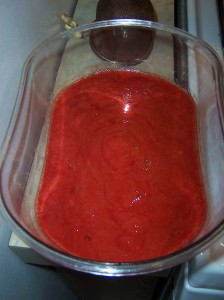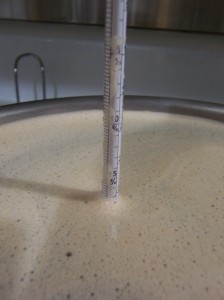One of the most abundant wild foods in my ecosystem is the chokecherry. Prunus virginiana is indigenous to North America, and was “the most important fruit” in many Native cultures. My friend Arthur Haines recently produced a video showing how he likes to use the choke cherry:
Many people believe chokecherries to be poisonous, which is a bit of an oversimplification. The seeds do contain an element called prunasin which can adversely affect our respiratory system when taken in quantity, though like all poisons it depends on the dosage. Smaller doses can have a medicinal effect for lung disorders, this is one reason cherry cough drops have become so popular.
Regardless, there are a few ways to deal with the prunasin. You can either take the seeds out entirely, or heat-treat the seeds either via drying as Arthur does in his video or via cooking to deactivate the prunasin, rendering the seeds edible without harm to the human body. For this batch of mead, I used the former strategy, juicing the chokecherries and discarding the seeds.
My wife knew of a patch growing nearby and was kind enough to harvest more than half gallon of the cherries:

I couldn’t wait to use these in a mead! I wanted to combine it with an herb, since I’m trying to expand my use of herbs in my meads. After a lot of thought, I decided to use Red Ginseng Root as the herb. Traditionally in Chinese herbalism, Ginseng is only given to the very old and convalescent. It is respected as a powerful stimulant for those who need it in the short term, and not as a “caffeine substitute” in the west. Regardless, this herb has a long and rich history:
In Asia, wars have been fought over possession of fields where ginseng grew abundant and wild. Ginseng is a known adaptogen, which helps the body adapt to stress, and to help balance itself. A vast amount of research has been done over the last 20 years that has gone a long way in proving that ginseng does have properties that improve memory, mental acumen, and in relieving stress and fatigue. The German E Commission has noted that used as a tonic, it may help fortify and invigorate in times of fatigue, or in times when great concentration may be needed.
I made a decoction using both Chaga and the diced root of Red Gingseng. The scent of the tea was wild, almost exotic! I can’t describe it, it smells like nothing else. After I reduced the heat, I added some Staghorn Sumac powder in a teabag to infuse for about an hour. I then strained the tea, and let it cool to blood temperature.
I then juiced the cherries, to yield about a quart of gorgeous red cherry juice:

I then added enough of Tony’s Raspberry Honey to get to an 18% alcohol potential:

The result is a very nice red colored must:

I think this will be a good one!
UPDATE: 11/18
This one came out a very brilliant yellow color! Surprising but very cool. This is also the best tasting mead I’ve done in a while. It’s about 4.5% alcohol potential, which means this is 13.5% alcohol.
